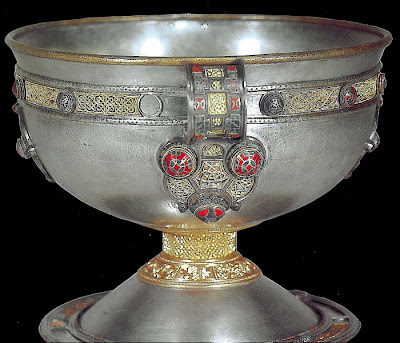Dr. Lonnie Edwards will return to the Rosicrucian Cultural Center (2303 Adam Clayton Powell, Jr. Boulevard in Manhattan) on Saturday for another Spiritual Laws discussion at 1 p.m.
Edwards is the author of Spiritual Laws that Govern Humanity and the Universe.
In other news, the new issue of Rose Croix Journal is available. Issue No. 10 features “liberal arts papers as well as scientific papers on topics of interest to Rosicrucians, including a paper summarizing the findings of a recent Sixth Degree Research Team project, the Journal continues the spirit of free philosophic inquiry that characterized the Renaissance and the Enlightenment, prominent figures in which included Rosicrucians.”
 |
| The cover art of the 2014 issue of Rose Croix Journal shows a colorful version of 'The Temple of the Rosy Cross,' an image dating to 1618 that bursts with symbolism and messages. |
Papers include:
- “Searching for the Cosmic Quintessence: How Alchemists Meditated in the Middle Ages and Renaissance” by Dennis Hauck, Ph.D.
- “Preliminary Experiments on Contact Healing, Breathing Exercises, Sounds, and Their Responses” by the Sixth Degree Research Team, namely Hugh McCague, Ph.D. and Bryan Young, MD, among others.
- “The Non-Dual Root of Science and Religion” by Thomas J. McFarlane.
- “Wolfram von Eschenbach’s Secret of the Holy Grail” by Douglas J. Meyer.
- “Cardiovascular Disease in the Western World—an Overlook Risk Factor” by Raymond A. Schep, D.Sc.
“Now entering its twelfth year, the Journal has established itself as a source of philosophic and esoteric literature, having recently been nominated for inclusion in a database used by research libraries across the globe,” according to the Rosicrucian Order. “Another point of interest: our team of 44 editors and staff is among the largest volunteer teams in the recent history of the Order.”




































































